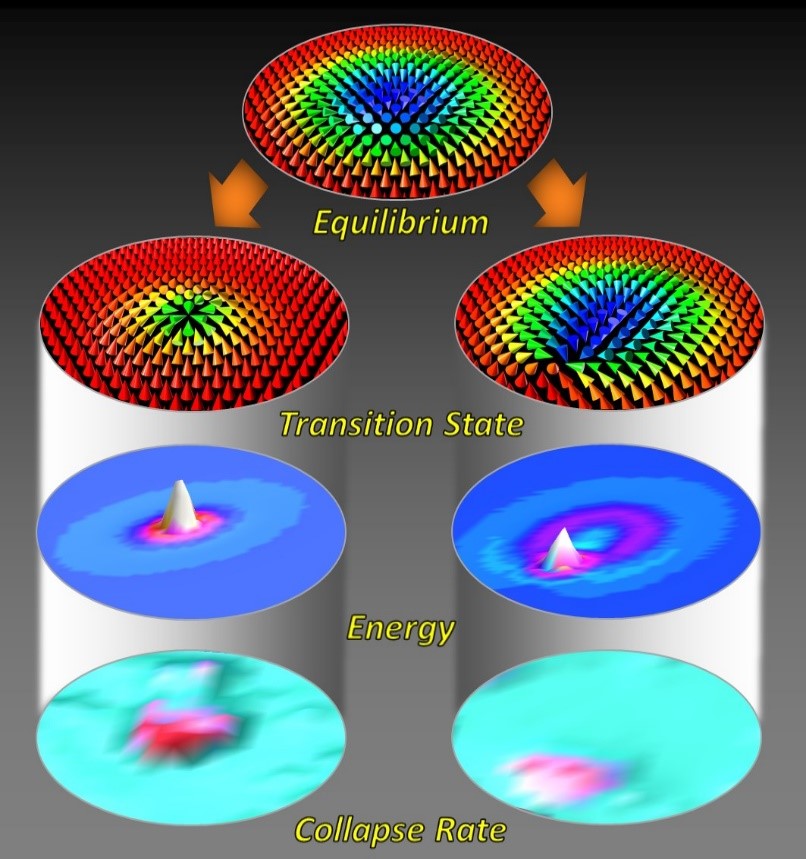Topological spin structures

The Dzyaloshinskii-Moriya interaction can stabilize magnetic skyrmions - localized, topological spin structures - at transition-metal
interfaces. Due to their intriguing topological and dynamical properties skyrmions have
raised high hopes for future spintronic applications e.g. in racetrack-like memories or in neuromorphic computing.
We have studied single magnetic skyrmions and lattices at transition-metal
interfaces and have demonstrated that one can describe their properties
based on the electronic structure of the interface obtained via density functional theory (DFT)
(Nature Phys. 7,
713 (2011)
and Nature
Comm. 5,
4030 (2014)).
The spin model - fully parametrized based on our DFT calculations - can be studied using atomistic spin simulations which allows to quantify
the stability of topological spin structures and to show how frustrated exchange interactions
(S. von Malottki et al., Sci. Rep. (2017))
and higher-order exchange
(S. Paul et al., Nat. Commun. (2020))
can enhance skyrmion stability.
Our first-principles based
approach allows to make predictions for promising material systems hosting skyrmions (S. Haldar et al., PRB (2018))
which have in some cases already been verified experimentally (S. Meyer et al., Nat. Commun. (2019)).
We can further reveal the mechanism for the collapse or creation of skyrmions with our methodology. Recently, we have discovered the Chimera collapse mechanism
which has been confirmed by experiments (F. Muckel et al., Nat. Phys. (2021)).
Click here for more information on the image (copyright RWTH Aachen).
Press releases of the University of Kiel on our work:
Lattice of magnetic vortices (2011)
Magnetische Wirbel massgeschneidert (2014)
Simple detection of magnetic skyrmions (2015)
Skyrmions a la carte (2016)
Spontanes Auftreten magnetischer Wirbel entdeckt (2019)
Extra stability for magnetic knots (2020)
How to untie magnetic nano-knots (2021)
If you are interested, more information can be found in the Publications,
Press, and
Gallery Sections on this page. For further details you can
contact Stefan Heinze.
<<< Back to activities
